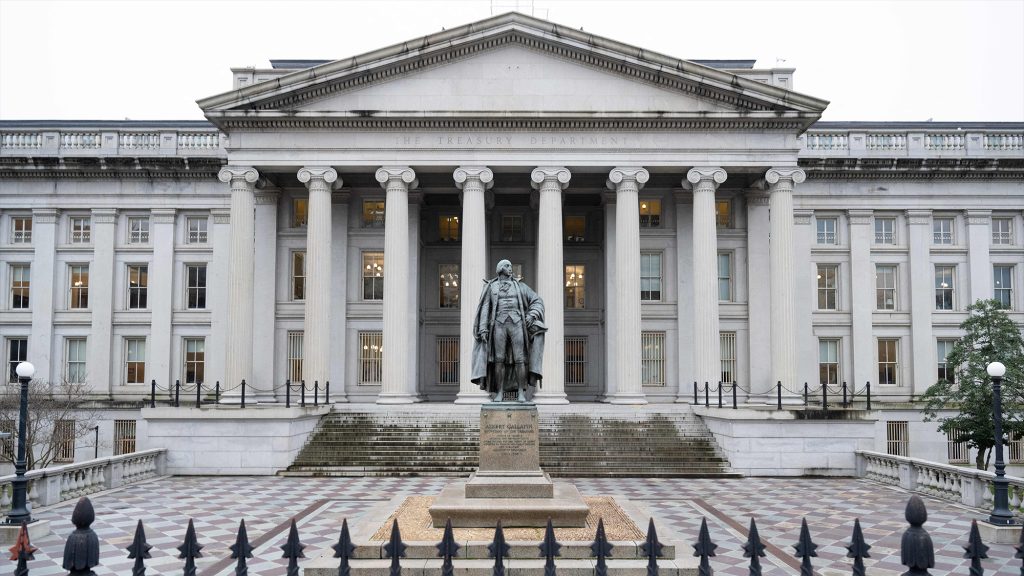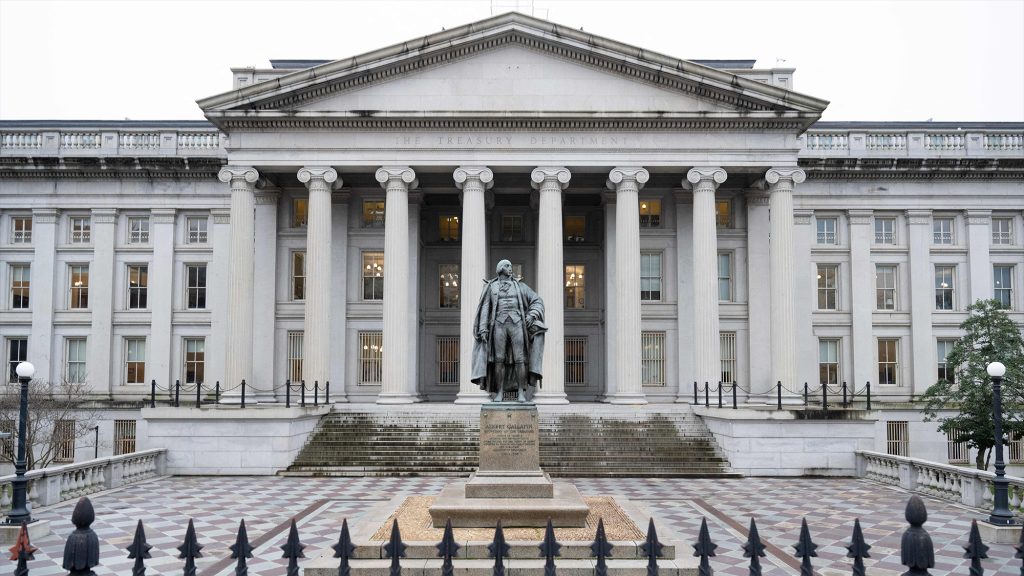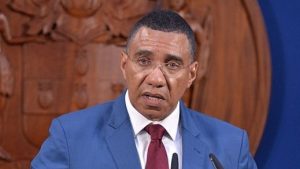(CNN) — The federal government will be unable to fully pay its obligations sometime between July and September if Congress doesn’t address the debt limit before then, the Congressional Budget Office said Wednesday.
That’s when the agency expects the Treasury Department will exhaust its ability to borrow additional funds using extraordinary measures.
However, the CBO stressed in its report that its projection is uncertain because the timing and amount of revenue collected and money spent could differ from its estimates. For instance, if income tax receipts in April come in lower than expected because of last year’s stock market downturn, the extraordinary measures may be exhausted sooner, and the government could run out of funds before July.
The CBO expects to revisit its projection in May after the current tax filing season closes and it has a clearer picture of how much federal tax revenue will come in this year. At that point, the agency may be able to narrow down a more specific time frame.
The CBO’s report is yet another warning to Congress that it needs to act soon to avoid a catastrophic default. But House Republicans and President Joe Biden have made little progress so far in resolving their differences on dealing with the budget cap.
The agency also released its 10-year budget and economic outlook, in which it projected major increases in federal budget deficits and debt over the next decade. The country’s financial picture has worsened largely because of increased federal spending, approved by both parties, and higher interest rates.
In addition, the CBO estimates that inflation-adjusted economic growth “comes to a halt” in 2023 because of the Federal Reserve’s interest rate hikes. It expects inflation to decline this year and the unemployment rate to rise through early 2024, reflecting the slowdown in economic growth.
“Over the long term, our projections suggest that changes in fiscal policy must be made to address the rising costs of interest and mitigate other adverse consequences of high and rising debt,” Phillip Swagel, the CBO’s director, said in a statement.

Reaching the debt ceiling
The US hit the debt ceiling set by Congress on January 19, forcing the Treasury Department to start taking extraordinary measures to enable the federal government to keep paying its bills on time and in full. The actions are mainly behind-the-scenes accounting maneuvers.
In a letter to House Speaker Kevin McCarthy last month, Treasury Secretary Janet Yellen said that the measures would last through June 5, but that estimate is subject to “considerable uncertainty.”
House Republicans and the White House have not yet found much common ground to settle their standoff over the borrowing cap. GOP lawmakers are demanding spending cuts in exchange for raising the debt ceiling, while Biden is calling on Republicans to negotiate on reducing spending without holding the debt ceiling hostage.
The president, meanwhile, said Wednesday that the budget proposal he will release next month will cut the deficit by $2 trillion over 10 years. He has pushed for raising taxes on the wealthy and large corporations.
The data in the outlook — including a near doubling of the debt held by the public by 2033 — will provide fodder for GOP lawmakers in their current crusade to cut spending.
But the CBO report quickly prompted those on both sides of the aisle to trade accusations that the other party was responsible for the nation’s fiscal dilemma — with Democrats blaming Republicans’ penchant for tax cuts and Republicans pointing to spending packages enacted by Biden and Democratic leaders in Congress.
It also has federal budget watchdogs sounding the alarm.
“Today’s CBO report should provide an important dose of reality for politicians making promises they can’t afford to keep,” said Maya MacGuineas, president of the Committee for a Responsible Federal Budget. “Our debt is headed to a new record in only five years, while interest costs will triple over the next decade.”
Steep increase in the deficit
The CBO’s projection shows the high hurdles Biden and Congress face in strengthening the nation’s finances.
Its estimate for the 2023 budget deficit is $1.4 trillion, about $400 billion more than it was last May. The shortfall will hit $2.7 trillion in 2033, the agency projects.
The deficit amounts to 5.3% of gross domestic product this year and grows to 6.9% in 2033. This is “significantly larger” than 3.6% of GDP that deficits have averaged over the past five decades, the agency noted.
The CBO now projects the cumulative deficit over the next decade will be $3 trillion larger than it estimated last May. This is mainly because of new legislation and changes to the economic forecast that boost interest costs and spending on mandatory programs.
Meanwhile, federal debt held by the public is expected to balloon from 98% of GDP this year to 118% in 2033 — which would be the highest level ever recorded — as interest costs and mandatory spending outpace the growth of revenues and the economy. It’s expected to hit 195% of GDP by 2053.
The jump in mandatory spending will be driven by rising costs for Social Security and Medicare as the US population ages. Federal health care costs are also growing.
“The fiscal trajectory is unsustainable,” Swagel said at a news conference Wednesday.
But he also noted that there is no one point when “we will have a Wile E. Coyote moment.”
Legislation enacted by Congress since May prompted the CBO to increase its projections of deficits over the next decade by $1.5 trillion, but most of it stems from bipartisan bills to expand health care benefits for veterans exposed to toxic burn pits and to increase defense spending.
Net spending on interest will increase substantially, from $475 billion in 2022 to $1.4 trillion in 2033, the CBO projects. It has already risen swiftly because of the Federal Reserve’s interest rate hikes last year.
“The national debt is nearly the size of US economic output and growing rapidly,” said Bill Hoagland, senior vice president at the Bipartisan Policy Center. “Both parties agree: We have been on an unsustainable path and are in need of correction.”
Slowing economy
The CBO expects the US economy to slow this year, projecting real GDP growth of 0.1% in the fourth quarter from the year before. It then sees real GDP rebounding in 2024, with 2.5% growth for that comparable period.
The economic projections show inflation easing by the end of the year, landing under 4% and reaching the Federal Reserve’s 2% target by 2026. The CBO expects unemployment to rise considerably from its current 53-year low of 3.4% to hit 5.1% by the end of the year.
The CBO’s estimated economic trajectory aligns with projections released by the Fed in December showing GDP slowing, inflation easing and unemployment rising. The central bank at the time projected that real GDP growth, inflation and unemployment for 2023 would be 1.2%, 2.8% and 4.4%, respectively.
The Fed will update its economic projections at next month’s policymaking meeting.
This story has been updated with additional information.
The-CNN-Wire
™ & © 2023 Cable News Network, Inc., a Warner Bros. Discovery Company. All rights reserved.






More Stories
Call for cricket history to be taught in schools
Jamaica’s PM condemns killing of student
Egyptian delegation in Israel to revive stalled ceasefire, hostage talks